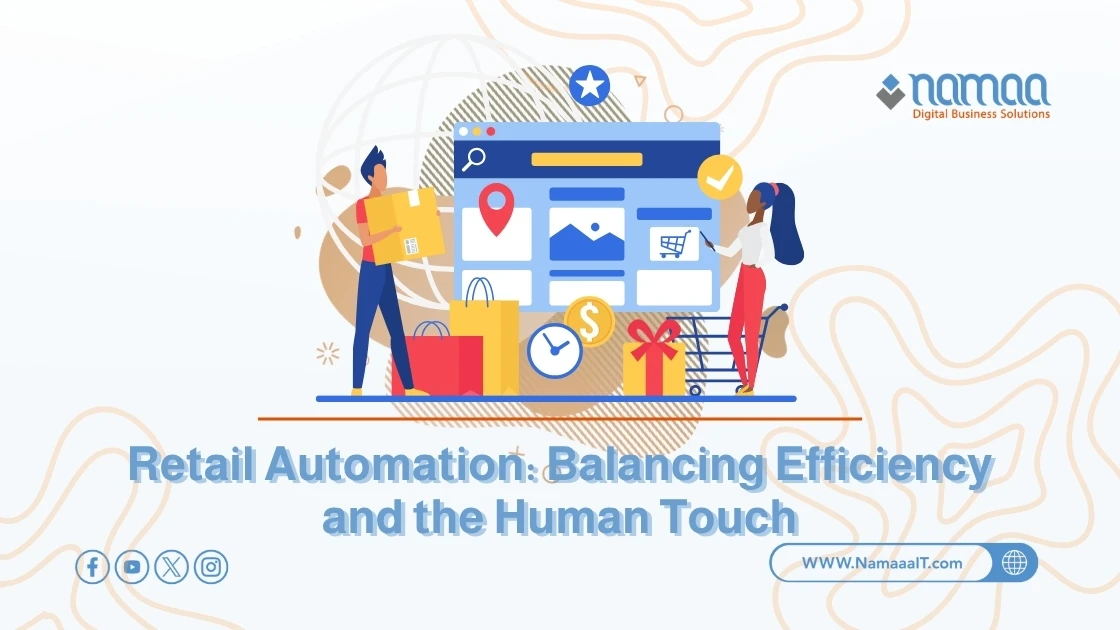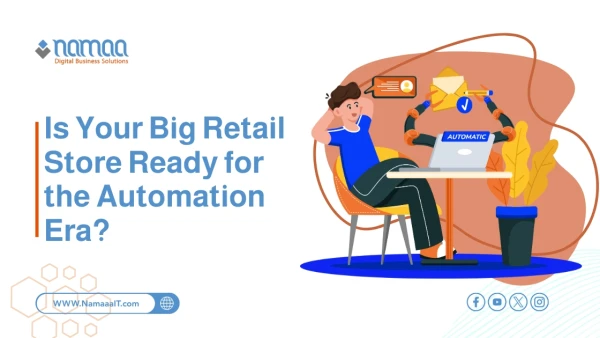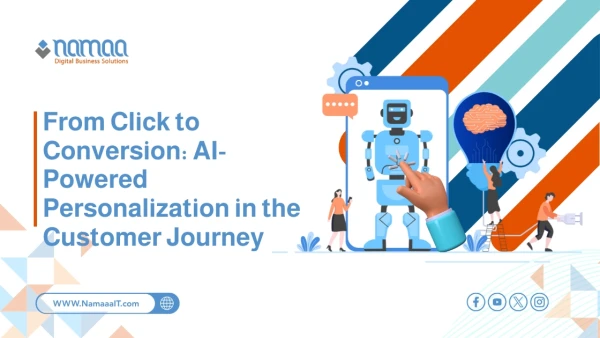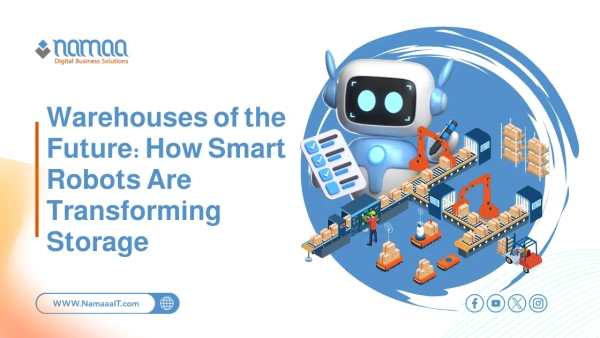In recent years, the retail sector has undergone profound transformations, driven by rapid advances in automation and artificial intelligence. Tasks that once required hours of human labor can now be completed in minutes—from inventory management and sales data analysis to personalized offers and seamless payment processes. Automation has enhanced efficiency, reduced errors, and empowered businesses to respond to market fluctuations with unprecedented agility. Yet, this technological leap raises an unavoidable question: What is the role of humans in this new system? Can automated systems, no matter how precise, truly replace genuine human interaction—especially in a sector deeply rooted in customer experience?
What Is Retail Automation?
Retail automation refers to the use of technology to perform tasks and processes in the retail sector without direct human intervention. These tasks range from inventory management and pricing to customer service and data analysis. The primary goals are to accelerate processes, minimize errors, and reduce costs—all while improving the customer experience.
Thanks to advances in AI, machine learning, and the Internet of Things (IoT), retail automation has developed rapidly over the last decade. It has become a core component of growth strategies for companies of all sizes.
Automation isn’t limited to robots or complex systems; it includes everyday tools like smart point-of-sale (POS) systems, self-checkout kiosks, and intelligent recommendation engines on e-commerce sites. The key difference between traditional and modern retail is the latter’s ability to collect and analyze data, then make real-time decisions—all without human involvement.
While automation significantly boosts efficiency, there’s ongoing debate about whether the sector can rely on it entirely, especially in areas that require personal interaction. As competition intensifies, automation is becoming indispensable—but it's not a magic bullet. It’s part of a broader system that must strike a careful balance between technology and human elements.
Key Objectives of Retail Automation
Retail businesses adopt automation to achieve several fundamental objectives, including:
- Reducing operational costs: Automating repetitive tasks reduces the need for large staff numbers, directly lowering payroll and administrative expenses.
- Minimizing human error: Especially in sensitive areas like inventory management and payments, automation ensures precision and speed.
- Improving customer experience: Faster, more personalized services such as intelligent product recommendations or self-checkout enhance satisfaction.
- Leveraging big data: Automation enables companies to gather and analyze massive datasets, offering insights into buying behavior, preferences, and peak times.
- Accelerating expansion: Automated operations allow businesses to scale to new markets with minimal added cost, making automation a strategic choice—not just a tech upgrade.
Popular Automation Systems in Modern Stores
Retail automation systems vary based on store size, product type, and target audience. However, several systems have become widely adopted due to their impact on efficiency and profitability:
- Smart POS systems that integrate with inventory, analyze purchasing behavior, and issue restocking alerts.
- Self-checkout kiosks that reduce wait times in large stores.
- Automated inventory management using IoT sensors to track shelf stock in real time and trigger automatic restocking.
- Recommendation algorithms in e-commerce that suggest products based on individual user behavior.
- Predictive analytics tools that merge data sources to guide pricing, product placement, and sales planning.
These systems are now essential for staying competitive—not just luxury tech add-ons.
Read also: The importance of online store speed
The Role of AI in Understanding Consumer Behavior
Artificial intelligence has become a cornerstone of modern retail, especially in decoding and analyzing consumer behavior. Using machine learning and natural language processing, AI processes vast volumes of customer interaction data—both online and in-store—and transforms them into actionable insights.
For example, AI can analyze user activity on a website: which products they click on, how long they browse, whether they buy immediately or hesitate. Based on this, businesses can personalize offers, ads, and even rearrange product displays in real-time.
In physical stores, cameras with visual analytics track customer movements, identifying popular or ignored zones—helping optimize store layouts. AI is also at the heart of customer service chatbots, which improve over time by learning from each interaction.
Most importantly, AI helps forecast demand—allowing businesses to minimize waste and maximize sales. Knowing what a customer wants before they ask signals a new era of retail precision, unachievable through traditional means.
Does Automation Affect Retail Job Opportunities?
Automation often raises concerns about job displacement, especially in labor-intensive sectors like retail. It’s true that automation can reduce the need for certain roles, such as cashiers or stock clerks. However, it also creates new roles that require technical and analytical skills, such as data management, system support, and digital customer engagement.
Even traditional roles are evolving rather than disappearing. For example, in-store staff are becoming customer advisors who use data to deliver more personalized experiences. In other words, automation is redefining jobs—not eliminating them.
It's the responsibility of companies and governments to offer training and reskilling programs so workers can be part of this transformation, not its casualties. Automation doesn’t mean the end of human work—it marks a new era of human-tech collaboration.
Tips for Small Businesses Starting with Automation
For small businesses, automation may seem overwhelming or expensive. But getting started doesn’t require a massive leap—just smart, incremental steps:
- Identify time-consuming tasks like manual inventory checks, appointment scheduling, or repetitive inquiries, and choose simple tools to automate them.
- Start with scalable systems: There are low-cost POS and inventory tools that work on computers or smartphones—ideal for small operations that can grow as needed.
- Train your team: Don’t assume tech will solve everything. Employees need to understand how tools work and how they improve, not complicate, their jobs.
- Use data from the start: Even basic tools collect customer and product insights that help refine marketing and inventory decisions.
- Explore free or low-cost support: Many platforms offer small business support programs to reduce initial costs. Automation isn’t just for big players—it’s a scalable opportunity for all.
FAQs on Retail Automation
1. Can automation improve marketing in retail?
Yes. Marketing automation tools can send targeted emails, schedule social media posts, and run data-driven ad campaigns. Technologies like geo-targeting personalize offers by location, increasing engagement and conversions.
2. How does automation affect store employees?
Automation reduces repetitive tasks like manual data entry or stock checks, letting staff focus on human-centric roles like customer advice. With access to real-time product and customer data, employees feel more empowered—provided proper training is given.
3. How does automation impact market competitiveness?
Automation is a competitive edge—companies using it strategically deliver faster, more accurate, and personalized service. It also enables quick decisions based on real-time data. Today, the “how” of selling is as important as the “what,” and automation defines that “how.”
Summary
✅ Studies show automation can cut retail operating costs by up to 30% through reduced waste and improved efficiency.
✅ Over 70% of large retailers use smart POS systems and automated inventory apps to streamline daily operations.
✅ AI can predict customer demand with up to 90% accuracy, boosting sales and reducing waste.
✅ While some traditional roles have declined, automation has driven a 12% annual increase in jobs related to data and systems support.
✅ Small businesses that adopt partial automation report a 20% productivity increase within the first year.





.webp)



